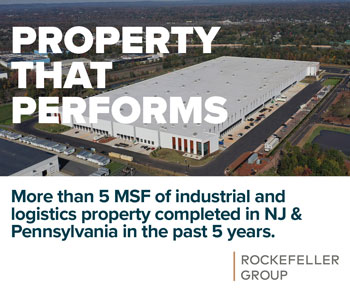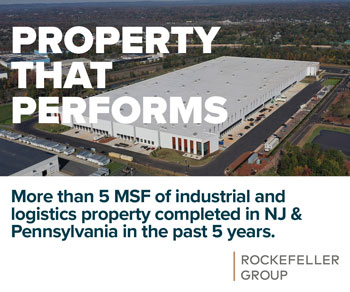By Michael G. McGuinness
When Gov. Phil Murphy issued his three climate-related executive orders on Feb. 15, calling for the electrification of hundreds of thousands more residential and commercial units by 2030, I chuckled. I chuckled because of what happened three days earlier during Fox’s broadcast of Super Bowl LVII. Fox aired a commercial for the RAM 1500 REV light duty electric truck that boasted if you wanted to ensure “you would last as long as you like, have sufficient power and be able to keep a charge,” you should drive a RAM 1500 REV when they are available in late 2024.
 I admire the governor’s confidence that our utility companies and infrastructure will be ready to satisfy this new desire for electric power. However, it is unclear if New Jerseyans will be clamoring for more electricity. Most New Jerseyans can neither afford the price of an electric vehicle nor the additional costs of electric appliances, nor the utility itself. Nevertheless, I applaud the governor for prioritizing the need to combat climate change through an accelerated target of 100 percent clean energy by 2035, ambitious goal-setting for electrification of the state’s building sector with an additional 400,000 residential and 20,000 commercial units by 2030 and collaborative planning for the future of the state’s natural gas utilities.
I admire the governor’s confidence that our utility companies and infrastructure will be ready to satisfy this new desire for electric power. However, it is unclear if New Jerseyans will be clamoring for more electricity. Most New Jerseyans can neither afford the price of an electric vehicle nor the additional costs of electric appliances, nor the utility itself. Nevertheless, I applaud the governor for prioritizing the need to combat climate change through an accelerated target of 100 percent clean energy by 2035, ambitious goal-setting for electrification of the state’s building sector with an additional 400,000 residential and 20,000 commercial units by 2030 and collaborative planning for the future of the state’s natural gas utilities.
In brief, his three executive orders: (1) E.O. 315 directs that 100 percent of the electricity sold in New Jersey is to be derived from clean sources of electricity by 2035 through the advancement of clean energy market mechanisms; (2) E.O. 316 calls for the electrification (retrofitting or construction of buildings with electric space heating and cooling, and electric water heating systems) of an extra 400,000 residential and 20,000 commercial facilities plus 10 percent of low-income housing units by Dec. 31, 2030; require the development and release of a strategic roadmap for building decarbonization by March 2024; require the New Jersey Department of Community Affairs to develop guidance for builders to use voluntary enhanced building standards and for state agencies to incentivize their use; and require the New Jersey Board of Public Utilities (BPU) to track and publicly report annual progress toward meeting the targets above in electrifying the building sector; and (3) E.O. 317 requires the BPU to meet with stakeholders and develop recommendations by Aug. 15, 2024 on how the natural gas industry can best meet its goal of 50 percent reduction by 2030 (from 2006 levels).
Coincidentally, on that same day, NAIOP New Jersey was hosting a webinar — “Impact of Electric Vehicles on Commercial Real Estate” — with Cathleen Lewis of the BPU, Andrew Gottesman of Edison Properties (and owner and developer) and Bob Goldsmith, a land use attorney with Greenbaum Rowe Smith & Davis LLP. The program provided commercial real estate professionals with an easy and efficient way to learn what they should know and be doing, along with available state, federal and utility assistance and incentives available and the legal obstacles, challenges and opportunities they may encounter. The balance of this article includes some takeaways from that webinar.
From the building and parking facility owner’s perspective, it became clear the primary reason for installing electric vehicle (EV) chargers for tenants was to provide an amenity, like a cafeteria or gym, to distinguish the facility as a Class A building. Aside from helping the owner to remain competitive, it also can be a way to incentivize employees to return to the office. Although 80 percent of New Jersey’s 91,000 EV owners charge at home, the other 20 percent don’t have access to chargers in their multiple-unit dwellings. Another reason noted for investing in EV chargers was to do the right thing and support efforts to combat climate change and lower our carbon footprint. It can also be an effective way to enhance the facility owner’s return on investment, obtain financing and demonstrate compliance with growing industry environmental, social and governance standards. In many ways, it can be a game changer. Mr. Gottesman noted his total charger installation costs, including utility delivery, wiring and unit, averaged between $15,000 and $20,000 per charger. He estimates it costs him about $5 every time a tenant charges their EV.
BPU’s manager of e-mobility programs for the Office of Clean Energy, Cathleen Lewis, is the lead coordinator for all incentive programs among the utilities and state and federal agencies. She was emphatic in urging CRE developers and owners to invest now in building the necessary electric infrastructure for their properties, along with installing EV chargers, given the generous incentives currently available. Aside from federal tax credits for buying electric vehicles and electric cars, utility companies, the New Jersey Department of Environmental Protection and the BPU all have funding available to offset many of the costs to make a parking facility ready for EV chargers. Several programs exist including: (1) the Charge Up New Jersey Point-of-Sale program for personal vehicles that offers $2,000 to $4,000 incentives, along with $250 toward purchase of EV chargers; (2) Clean Fleet: geared toward local government agencies offering $4,000 toward the purchase of EVs and $4,000 to $5,000 toward public and fleet EV level 2 chargers and up to $50,000 toward fast chargers; (3) MUD (multiple unit dwelling): $4,000 to $6,000 toward EV chargers with up to six per property; (4) EV Tourism: $5,000 toward EV chargers, up to six per location; and (5) A medium- and heavy-duty EV charging program, funded by the Regional Greenhouse Gas Initiative, designed for warehouses and truck parking facilities that will pay up to $225,000 for community charging and $175,000 for fleet charging. More details on these and other programs are available at https://njcleanenergy.com/ev. EV chargers must be Energy Star-certified and from a pre-qualified network.
Ms. Lewis also gave a primer on the three different levels of chargers. At the low end is the AC level 1 (120V) charger for single- and multifamily use. It charges three to five miles of range per hour and is best for overnight charging. It costs between $500 and $1,000 per port. The next step up is the AC level 2 (208-240 V) charger, which is designed for the office or downtown locations. It charges 10 to 20 miles of range per hour and is best for two- to six-hour dwell times. It costs between $600 and $5,000 per port. The highest level is a Fast Charger (480V 3-phase) designed for rest stops and public metropolitan areas.
Ms. Lewis also talked about the many ways that the BPU and utilities are working to boost energy efficiencies to lessen demand on the grid. She also spoke about the National Electric Vehicle Infrastructure Formula Program (“NEVI Formula”) to provide funding to states to strategically deploy EV charging infrastructure and to establish an interconnected network to facilitate data collection, access and reliability. This program may open new opportunities for CRE development in these locations. Ms. Lewis also discussed the Electric Vehicle Supply/Service Equipment (EVSE) Parking Requirement Law (P.L. 2021, c.171) and Municipal EV ordinance. In short, as a condition of preliminary site plan approval, permit applications involving new multiple-dwellings units (five or more) must comply with the following: (1) immediately, 15 percent of parking spaces shall be make-ready and one-third of those shall have EVSE installed; (2) within three years, EVSE must be installed in an additional one-third of the original 15 percent; (3) within six years, EVSE must be installed in the final one-third of the original 15 percent; and (4) overall, at least 5 percent of EVSE per site must be accessible for people with disabilities.
No time like the present to seize the opportunities that lie before us as we move on down the road. As we used to say in Latin class, “carpe diem.”
Michael McGuinness is CEO of NAIOP New Jersey and has led the commercial real estate development association since 1997. NAIOP represents developers, owners, asset managers and investors of commercial, industrial and mixed-use properties, with 850 members in New Jersey and over 19,000 members throughout North America.










